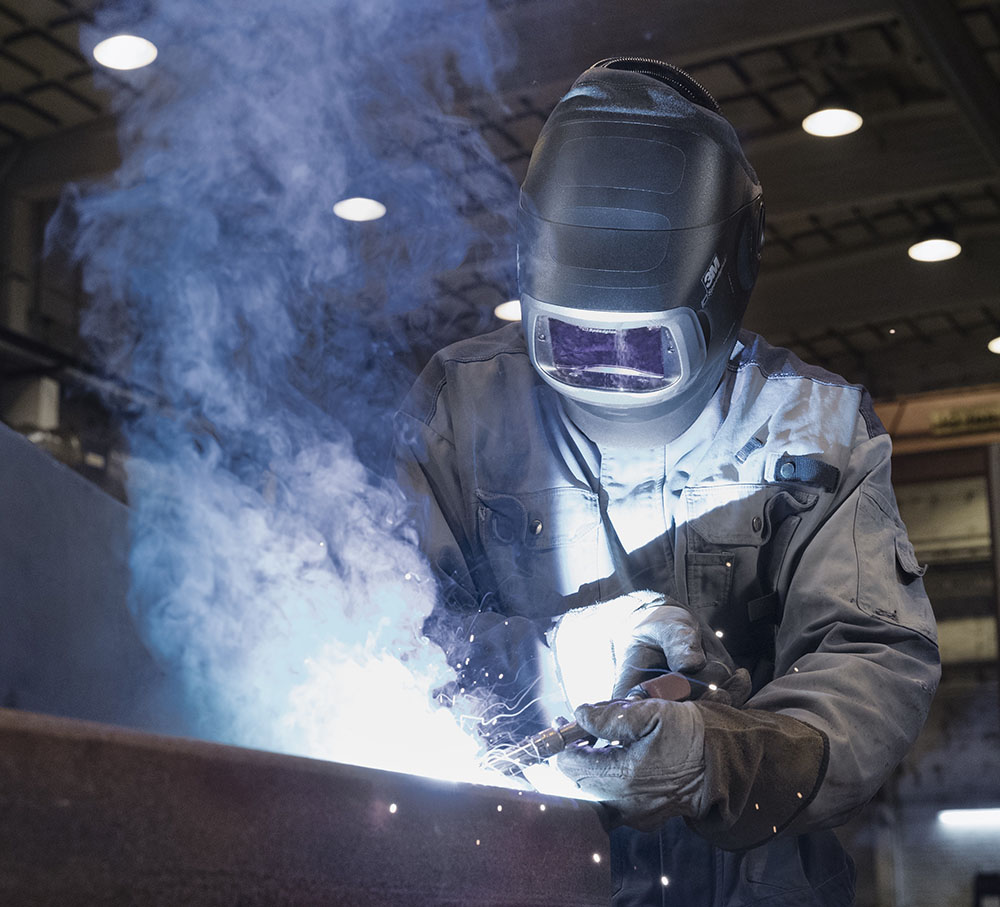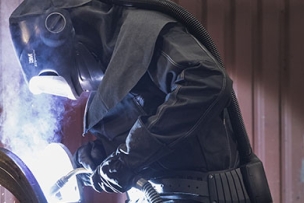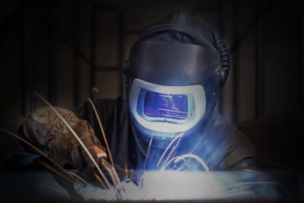Products that work as hard as you do. From the most basic to the most specialized needs, 3M offers the health and safety protection you and your workers need most, so everyone can perform at their best. We strive to deliver comfortable, well-designed personal protective equipment (PPE) that offers your workers the most effective protection available.
From harmful radiation to toxic fumes and molten metal, welding poses no shortage of risks to the people who choose it as a career.
An array of U.S. Occupational Safety and Health Administration rules recognize those dangers, setting guidelines meant to prevent fires, clear dangerous gases and ensure workers wear the personal protective equipment necessary to avoid physical harm.
That gear is something supplier 3M specializes in, with products including 3M™ Speedglas™ welding helmets and 3M™ Adflo™ Powered Air Purifying Respirators that help protect welders’ lungs, eyes, heads and faces while boosting comfort and productivity.
“For every helmet we design, we have four key driving factors,” says Brent Charlton, 3M’s welding portfolio manager for the U.S. and Canada. “Reliability, comfort, view and protection. It is the combination of these four factors that drives overall productivity for the welder and the shop.”
Comfort: The Key to Productivity
Productivity, always a key measure of performance and competitiveness, is growing even more important to manufacturers as they try to make the most of workers’ time amid a labor shortage expected to reach 2.1 million jobs by 2030.
One study that 3M conducted with a military shipbuilder showed that welders’ productivity jumped 44 percent while wearing a 3M™ Adflo™ respirator and Speedglas™ 9100FX-Air welding helmet instead of the half-face respirators they had used previously.
“The participants reported that they found the powered air purifying respirator systems were more comfortable,” 3M says in a white paper on the study, “which allowed the welders to stay under the weld hood longer, taking less break time.”










Talk to Us!
Leave a reply
Your email address will not be published. Required fields are marked *